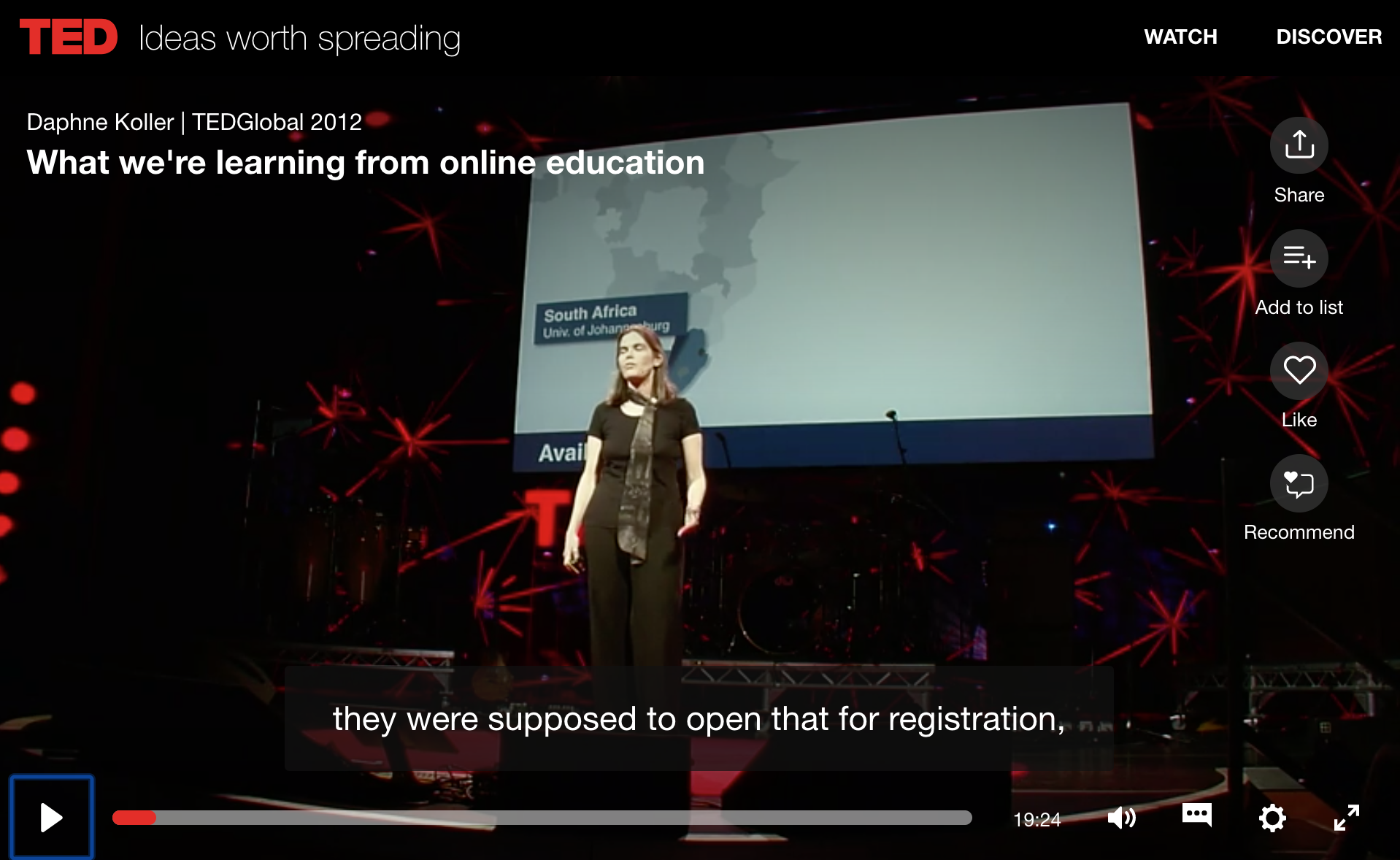48

To see this YouTube video, click on the graphic. For a response to this video, see: ‘What’s right and what’s wrong with Coursera-style MOOCs’.
The term MOOC was used for the first time in 2008 for a course offered by the Extension Division of the University of Manitoba in Canada. This non-credit course, Connectivism and Connective Knowledge (CK08) was designed by George Siemens, Stephen Downes and Dave Cormier. It enrolled 27 on-campus students who paid a tuition fee, but it was also offered online for free. Much to the surprise of the instructors, 2,200 students enrolled in the free online version (Siemens et al., 2011). Downes classified this course and others like it that followed as connectivist or cMOOCs, because of their design (Downes, 2018).
In the fall of 2011, two computer science professors from Stanford University, Sebastian Thrun and Peter Norvig, launched a MOOC on The Introduction to AI (artificial intelligence) that attracted over 160,000 enrollments, followed quickly by two other MOOCs, also in computer sciences, from Stanford instructors Andrew Ng and Daphne Koller. Thrun went on to found Udacity, and Ng and Koller established Coursera. These are for-profit companies using their own specially developed software that enable massive numbers of registrations and a platform for the teaching. Udacity and Coursera formed partnerships with other leading universities where the universities pay a fee to offer their own MOOCs through these platforms. Udacity in 2013 changed direction to focus on the vocational and corporate training market.
The Massachusetts Institute of Technology (MIT) and Harvard University in March 2012 developed an open source platform for MOOCs called edX, which also acted as a platform for online registration and teaching. edX also developed partnerships with leading universities to offer MOOCs without direct charge for hosting their courses, although some paid to become partners in edX. In 2021, edX was sold to 2U, a for-profit online course provider (Lederman, 2021). In addition to full degrees, EdX and Coursera both offer multiple micro-credentials, each with their own branding. A big change in 2017-2018 was a move to MOOC-based degrees, with seven universities announcing 15 degrees in 2017. By 2021, there were 70 MOOC-based degrees. Overall, 1,670 MOOC-based micro-credentials existed at the end of 2021 (Shah et al., 2022).
Other platforms for MOOCs, such as the U.K. Open University’s FutureLearn, have also been developed. By 2021, MOOCs reached 220 million learners world wide, with over 19,000 courses and 500 microcredentials, excluding China (Shah et al., 2022). In early 2022, 24 Chinese MOOC platforms offered over 69,000 MOOCs in Chinese, around twice as many as in 2020 . One Chinese MOOC, XuetangX, reached over 80 million users in 2021 (Ma, 2022). In India, SWAYAM, a MOOC launched by India’s government, is integrated within the Indian higher education system. Students in public higher education institutions in India can take up to 20% of their courses from SWAYAM for credit (Mendes, 2019).
Because the majority of MOOCs offered through these various platforms are based mainly on video lectures and computer-marked tests, Downes (2012) classified these as xMOOCs, to distinguish them from the more connectivist cMOOCs. xMOOCs have continued to develop and grow. There was a major boost during Covid-19, with many students probably supplementing their less-polished university-based Zoom lectures with the often more professionally produced MOOCs from Stanford, Harvard and MIT. However, as we shall see, MOOCs have not replaced either conventional universities, nor online courses for credit. They have instead become a very useful form of continuing education.
References
Downes, S. (2018) Online learning and MOOCs: Visions and Pathways, Stephen’s Web, May 2
Lederman, D. (2021) 2U completes purchase of edX Inside Higher Education, 17 November, 2021
Ma, R. (2022) Massive List of Chinese Language MOOC Platforms in 2022, The Report by class central, 19 January
Mendez, M.C. (2019) In India, MOOCs Are Now Part of the Education System The Report by class central, 2 April
Shah, D., Pickard, L. and Ma, R. (2022) Massive List of MOOC Platforms Around The World in 2022, The Report by class central, 11 January
Siemens, G., Downes, S., and Cormier, D. (2011) Connectivism and Connective Knowledge (a MOOC)

